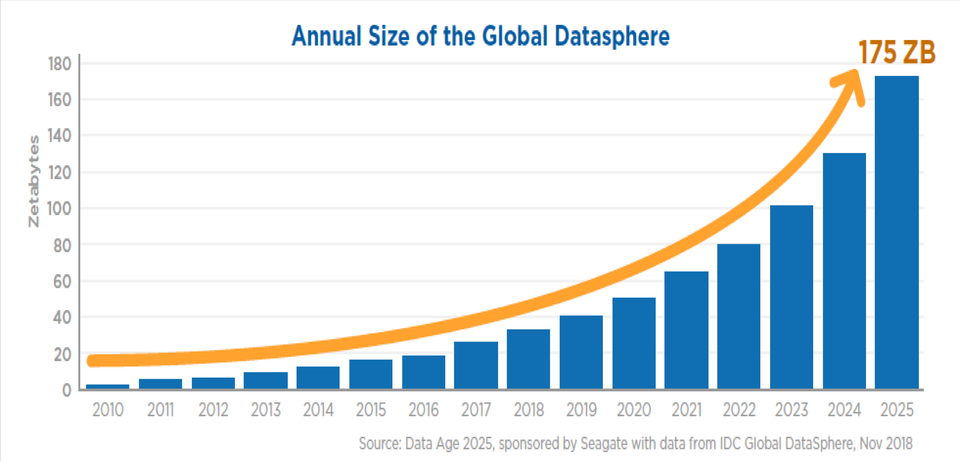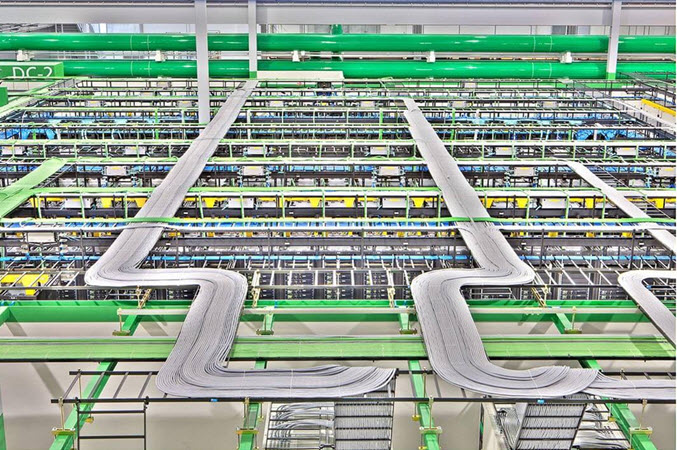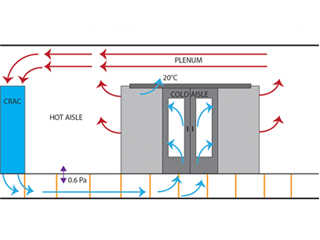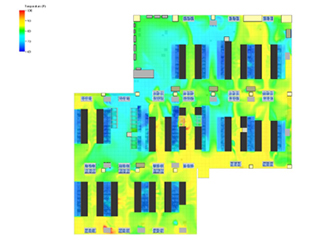Worldwide, Data centers use 200 terawatt-hours of power per year. With the sustainability movement, there are legitimate concerns about the rapidly expanding data center industry and its power requirements. So, how can we minimize energy use while delivering data center services?
What Does it Mean to be Green?
Whether it’s referred to as a Green Data Center or a Sustainable Data Center, the facility’s goal is to reduce its environmental impact. While there are numerous ways a company can decrease its carbon footprint, the following are the three main objectives:

- Reduce Power Generation from Fuel – Data centers use around 3% of world annual power consumption, contributing to 2% of CO2 emissions.
- Conserve Water – In 2020, 660 billion liters of water were utilized in the United States alone to cool IT racks, buildings, and generate electricity for the data center industry.
- Better Waste Management – Electronic waste accounts for 2% of all trash produced in the United States, yet it accounts for 70% of hazardous waste. Discarded servers, hard disks, and UPS batteries make up the bulk of this waste from the data center.
NetZero and Carbon Neutral are terms that are commonly used interchangeably. The goal of NetZero is to achieve a balance between greenhouse gases released into the environment and those removed. Although zero emissions and zero carbon are similar in that they both indicate no emissions were created in the first place, Carbon Neutral refers to the process of offsetting carbon emissions with a balancing component such as tree planting.
Historical Sustainability Measures
On the subject of recycling, many co-locater data centers have established recycling bays for clients’ recyclables. Making recycling simple assists customers in achieving their own sustainability goals, while also assisting the data center providers, in reducing the quantity of garbage generated at their facilities.
For 175 Zettabytes Future

Photo Credit: forbes.com
Data centers are now more linked than ever before. When you combine cloud connection with lower data transfer latency, you have a mountain of data flowing in and out of data centers all over the world.
Increasing density and containment are two measures that can be put in place right now. This can assist prepare for a 175ZB future. However, new technology and procedures may provide even better solutions and cost reductions.
Economical Stand For Data Center
It is not an exaggeration that until we embrace greener and more sustainable systems, the world’s future is at risk. This is something we all are aware of. Fortunately, efficiency frequently goes hand-in-hand with sustainability and efficiency with cost-cutting.

Photo Credit: datacenterknowledge.com
Even while the majority of data center clients focus on sustainability, some do not. Some clients are wary of the short-term expenses associated with sustainability initiatives. To that end, all there has to consider is the possible long-term cost savings of operating more effectively.
Collaborating with local utilities to discover more effective methods in greener energy alternatives is one easy way data center operators can do to soothe cost-conscious clients. Any possible energy cost reductions can be passed on to customers. It’s a win-win-win situation for us, our clients, and the rest of the globe.
In return, clients should be conscious of their provider’s future sustainability plan. Sustainability should not be an afterthought; it should be expected. There are sensible ways to be a sustainable consumer, and you shouldn’t have to choose between cost and efficacy. It is the responsibility of providers to assist you in finding that balance.
Monitoring the Data Center for a Sustainable Future
Change is the constant in life and business. However, technology is continuously looking ahead and investing in methods of improving the efficiency and sustainability of data centers.
Real-time monitoring of data center conditions has several advantages that cannot be underestimated. Improving energy efficiency and sustainability is a long-term endeavor. Operators must constantly have the most up-to-date data in order to make wise decisions and, ultimately, improve their facilities. Furthermore, real-time data from these monitoring technologies communicate crucial information about an issue within the data center at its inception, giving employees critical time to identify a solution before downtime occurs.
To assist in making preventive decisions and tracking sustainability progress, AKCP developed a solution to be utilized in monitoring and generating reports through dashboards. This includes user interface software and various smart sensors. This monitoring system can also be used to keep track of our carbon footprint. After all, as they say, if you don’t measure it, you won’t be able to control it.

AKCP Wireless Sensor Network
Environmental Monitoring
Monitor all your temperature, humidity, airflow, water leak, and other environmental sensors. Configure rack maps to show the thermal properties of your computer cabinet, check the temperature at the top, middle, bottom, front, and rear, as well as temperature differentials.
Power Monitoring
Monitor single-phase, three-phase, generators, and UPS battery backup power. AKCPro Server performs live Power Usage effectiveness (PUE) calculations so you have a complete overview of your power train and how adjustments in your data center directly impact your PUE.
Benefits of AKCP Monitoring
End-to-End Visibility
Measure, monitor, manage and control resources of the Data Center of both facility infrastructure components like and IT-infrastructure devices.
Informed Decisions
Get complete transparency of the entire Data Center infrastructure facility which allows IT admins to make more informed decisions based on operational improvement levers.
Scalable
The solution is future-ready and scalable. Data Center is ever-growing and evolving, and so are the monitoring needs. AKCP can scale and grow with your success.
Automate Processes
Drastically reduce complexity and human errors. Better utilize workforce with an automated solution for Data Center monitoring and management.
Smart Troubleshooting
Find & fix the root cause of the issue in one click before it impacts your end-users. Trigger automated remedy actions to solve the problems.
Reference Links:
https://www.nlyte.com/faqs/what-is-data-center-sustainability/
https://www.datacenterdynamics.com/en/opinions/a-framework-for-achieving-sustainability-in-data-centers/
https://www.techerati.com/features-hub/opinions/2021-the-year-of-the-sustainable-data-centre/
https://www.datacenterdynamics.com/en/opinions/data-center-sustainability-its-more-than-just-power/





